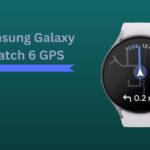There is no doubt that technology is an important facet of literally any profession. However, today more than ever before, technology is a vital component of business administration. In fact, when seeking an online DBA, it becomes obvious just how important technology is to business administration. It is evidenced by the inclusion of several modules focusing on the application of technology within the graduate’s role as a Doctor of Business Administration.
A Closer Look at the DBA Degree
At this point you may be questioning what the difference is between achieving a PhD in Business Administration and earning a DBA, Doctor of Business Administration. Simply put, a PhD in Business Administration prepares the graduate for work in the field of academia. A graduate with a DBA, on the other hand, has a heavy background in technology so that they learn decision-making techniques on an advanced level through the use of that technology.
They will also develop skills in research and writing using advanced technologies of today. Most graduates from a program like the highly ranked online DBA degree at Aston University are in high demand globally because of such a strong background in technology as it applies to business administration. Areas of concentration would include data analytics, predictive analytics, AI, and social media as it impacts market research. These are just some of the ways in which business administrators seek to harness the power of advanced technology.
Data Analytics for the Business Administrator
As a business administrator, it is essential to analyse data within literally every area of their organisation. A great number of tools are available to assist in rapidly collecting and qualifying data. Through connectivity, this data is available on the web. Tools designed for data analytics are user-friendly, scalable, and as mentioned, accessible once you have the proper tools for the collection of specified data.
Having the ability to access data on multiple levels gives today’s business administrator a greater ability to leverage this data in the all-important decisions they make daily. From SMEs to global conglomerates, it is vital for the administrator to have rapid and reliable data on hand. In other words, data analytics provides an administrator with the ability to be proactive in all decision-making processes.
Predictive Analytics to Anticipate Trends
Once the data is collected, quantified, and qualified, the next step is to begin anticipating future trends based on the available data. There is nothing quite as beneficial in marketing as predictive analytics. This information can be used for planning in production. If the analytics point to an upward swing in consumer interest, the data will be used to schedule increased production on the lines. However, if predictions show a downward trend, production can be scaled back accordingly.
Another side to predictive analysis is also waste management. When a manufacturer, for example, produces too much, a significant amount of waste occurs. This equates to a loss for the company in several ways. Not only are they using materials that could be used elsewhere on a product that sells but they will probably never get the full asking price for those products. This kind of waste has led many businesses to the point of failure.
AI and Social Media to Predict Human Behaviour
In recent years we have been hearing much about the use of Artificial Intelligence, AI, within the realm of business. Now it’s time to look a little closer to the predictive analysis mentioned above and ways to obtain the data needed for those predictions. Social media is one of the biggest tools for gathering data to be analysed because there is a human element involved. No matter how advanced AI becomes, there will always be that human element missing, and this is why social media is so important in marketing.
An interesting point to be made here is just how close to human behaviour AI can get. By ‘observing’ human interaction in messaging and texting, AI is able to ‘learn’ behaviours. One study a few years ago found that AI began to emulate human biases to the point of making racial slurs based on the language used in some of these online conversations. While that is never a good thing, these biases can be used to target consumer groups when marketing. A strong business administrator can use this kind of data analysis to structure future growth.
Technology within Every Facet of the Business
Since a business administrator is responsible for literally every aspect of that business, it stands to reason that they will be well-acquainted with technology as it impacts every department. Consider for just a moment all the ways in which technology is used in both front and back ends of a business. For example, HR uses technology in everything from recruitment to onboarding, training, and offboarding. This data can be accessed by an administrator to assess future trends in hiring policies.
Then there are the production lines that are operated through various automated technologies and the list goes on and on. With technology impacting every area of our lives, is it any different to imagine that technology impacts every area of a business? Bringing it back full circle, you can see why there is such a focus on how technology is used within a business when studying for that Doctor of Business Administration degree. The holder of a DBA, then, is the person who works in the field while a PhD in Business Administration would be slanted toward the education side of business administration.
The Knot That Ties It All Together
If you are considering a doctorate in business administration, the important point is to determine if you want to be working in the field or raising up a generation of students who will, in turn, be out in the field. If you are looking toward practical applications, that online DBA would be your best route. Having a PhD prepares you for academia. So, which degree would prepare you for the future you now envision? Once you know that, you know how to begin taking steps to reach your dreams and that’s the bottom line.




![How Much is Lil Baby’s Net Worth in 2024 [Latest Info] Lil Baby Net Worth](https://www.wariat.org/wp-content/uploads/2024/03/Lil-Baby-Net-Worth-150x150.jpg)
![Rob Lowe Net Worth Speculation in 2024 [Comparative Analysis] Rob Lowe Net Worth](https://www.wariat.org/wp-content/uploads/2024/03/Rob-Lowe-Net-Worth-150x150.jpg)

